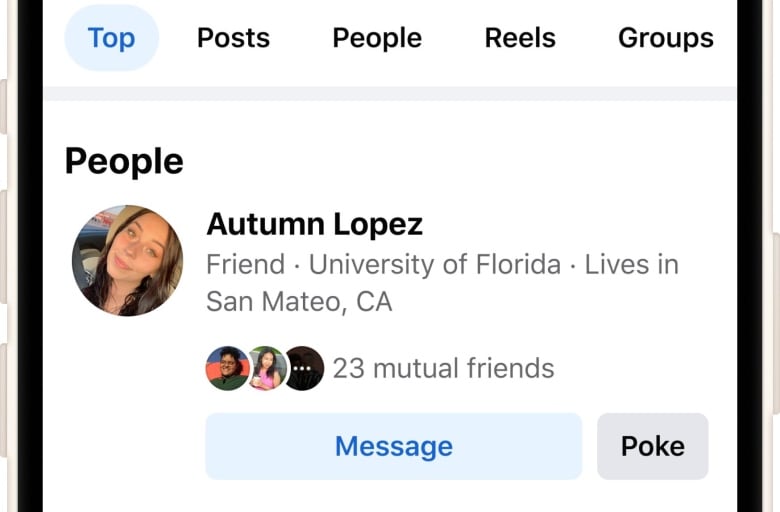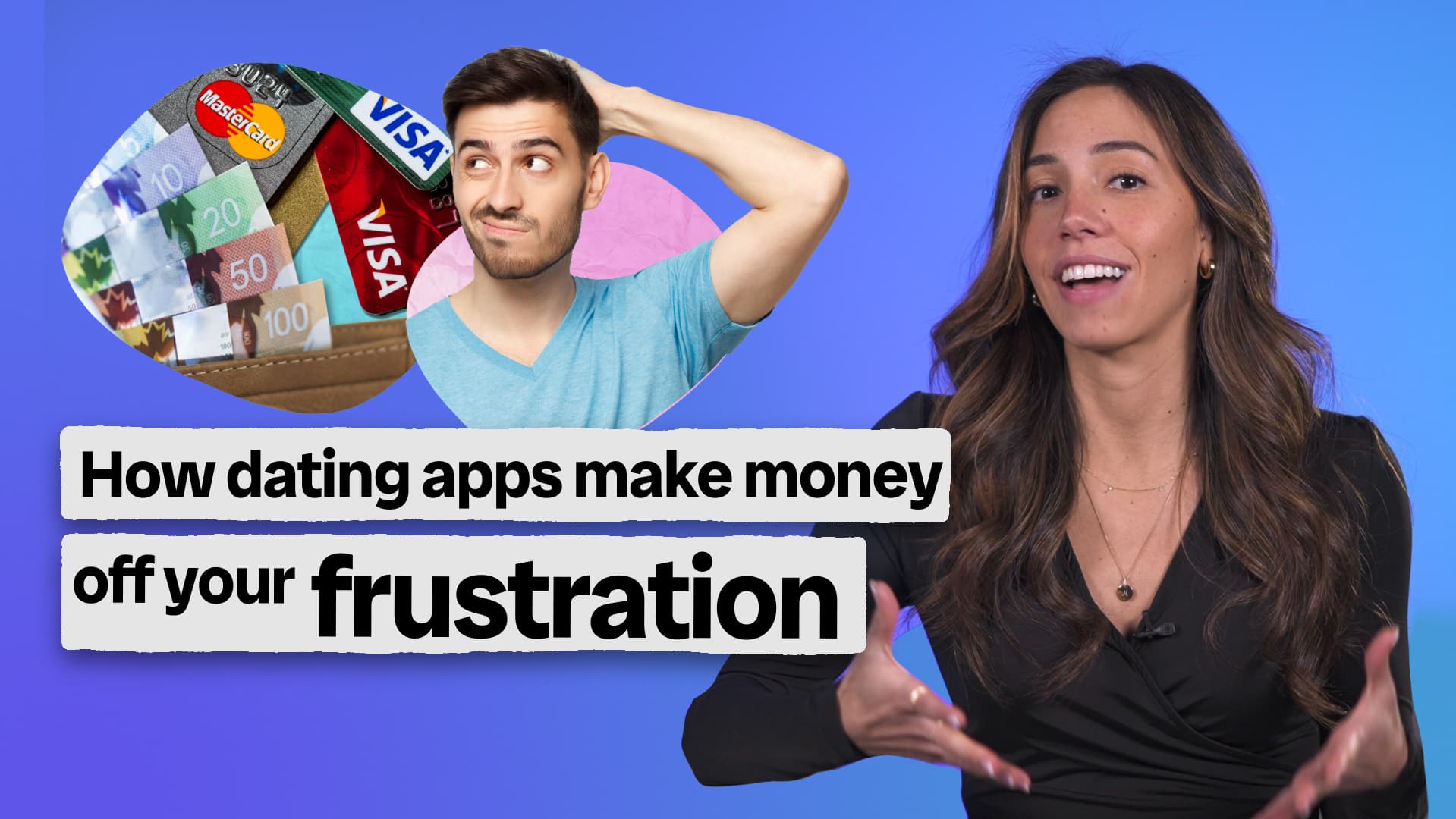
The Facebook poke is having a moment, thanks to a new generation discovering what some argue is the social media site’s most annoying feature.
There’s been a 13-fold spike in poking on Facebook in the past month, the company announced in a post last week. More than half the pokes are coming from people age 18 to 29, a Meta spokesperson told CBC News.
This is significant given that Facebook use among teens has dropped dramatically in recent years, according to a 2022 Pew Research Center report.
All this comes as Facebook resurfaces the poke function — which, technically, never went away, since it was launched along with the site itself in 2004.
Poking is like sending someone a nudge. They get a notification, but there’s no message attached, unlike with X/Twitter DMs or comments on Instagram. It’s also different from a “like,” which isn’t a request for attention.
Recently, the company quietly made three small “Easter egg” updates to the function, the spokesperson said in an email statement.
These include adding improved suggestions on who to poke, making it easier to find the poking page through search and adding the functionality to poke a friend when you search for them on Facebook. Indeed, a search on Facebook shows there is what appears to be a new “pokes page,” including suggestions of who to poke from your friends list.
But while Generation Z might be enjoying poking their friends, those who were around for the first wave of the poke popularity are less thrilled. Online, some people online are saying they never liked the function in the first place, that it was often used as corny way of flirting and they aren’t necessarily happy it’s back.
Have you ever paid for dating apps? Some apps want to convince you there’s a higher chance of finding love if you do, according to experts we spoke with.
Poking opens people up to social interactions they may not want, said Shana MacDonald, an associate professor in communication arts at the University of Waterloo who studies pop culture, social media and feminist politics. This was especially true when Facebook first launched and people were more indiscriminate about adding friends, she explained.
“That’s a turn-off of the function,” MacDonald said. “Just because you’re online doesn’t meant you want to have random social interactions with people that you aren’t that excited to have in your life.”
At a time when people have more boundaries with their social media experiences, the poke function complicates that, she said. It can be especially off-putting for women, who are often already dealing with unsolicited advances in any kind of app.
“It can be a form in which you may be approached by men… and the poke can in some ways then be a form of cat-calling, being hit on,” she said.
“It’s essentially a function we can expect will be used in a way that breaks boundaries.”
Not the first time Meta brought it back
This is actually the third time Facebook has tried to amplify the poke, and every other time the company eventually demoted it again. That’s because after a brief surge in popularity, people found it either annoying, disruptive or too ambiguous, said Philip Mai, a senior researcher and the co-director of the social media lab at Toronto Metropolitan University.
“People didn’t know, like, ‘OK, are you flirting with me, are you trying to get my attention and asking me to call you? What is the meaning of this poke?'” Mai said.
Mai compares the return of the poke to the McRib at McDonald’s, where taking something away and bringing it back creates a “false scarcity.” It’s also a way for Facebook to stay relevant, he added. But like the saucy sandwich, Mai has a feeling the poke will be just another fad that will eventually go away.

Both Mai and MacDonald say Facebook is betting on the nostalgia factor, where an older generation might enjoy using a feature that was popular 20 years ago, when it was still called Thefacebook. Back then, the ambiguity of what it meant to poke someone was the point, according to a 2014 Slate article.
“When we created the poke, we thought it would be cool to have a feature without any specific purpose,” Facebook said in its help pages at the time, according to Slate.
Drawing on a new audience willing to try it could bring some much-needed traffic back to Facebook, MacDonald said.
“For the younger generation who never got to experience the annoying feature, now’s their chance,” Mai said.


